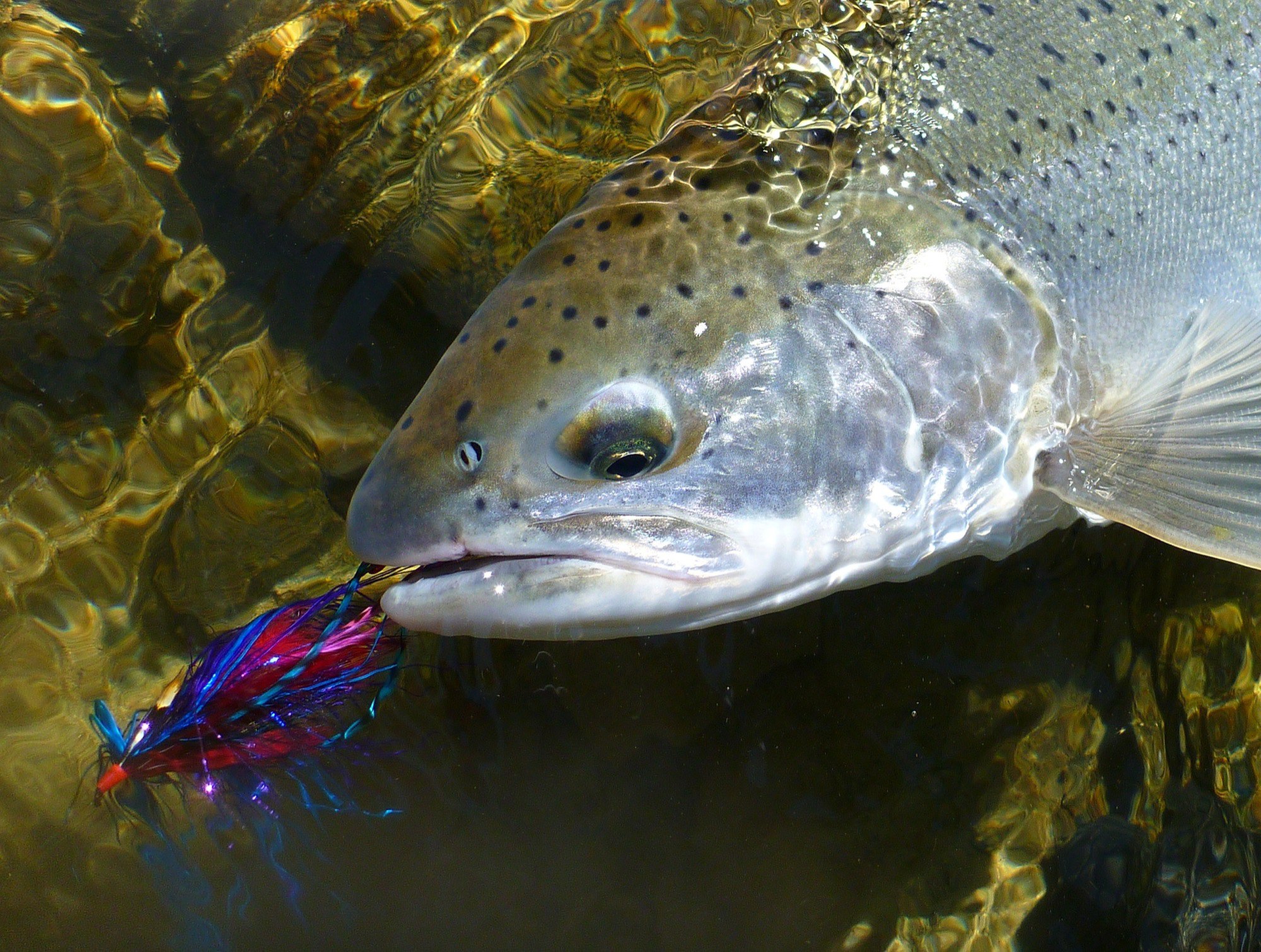It begins as a small trickle; a pattering of atonal drips and drops, melted glacial water droplets sing together in rhythm as they eventually harmonize into a powerful choir of humming, flowing streams.
They carry the tune down the steep mountains of coastal British Columbia, a modest adagio at first, simply adding volume to the grace of nearby cascading waterfalls and winding spring creek corners.
With each hour, the ensemble’s dynamics grow stronger as they merge, eventually sweeping up all who dare interfere, forcefully adding the unwilling into their musical masterpiece.
Uprooted cedars, crumbled mud banks, decaying leaves, and even the occasional unfortunate home all find themselves together as one; their bass and tremors shake the Earth as they dive into the main stem rivers and all surrounding tributaries.
A muddy brown anthem of screaming sopranos assault the unsuspecting flows and before long the entire West Coast is reborn as an unfishable, raging torrent of heavy metal and treacherous currents.
With the dramatic entrance of a Beethoven classic, Mother Nature’s symphony orchestra is a masterpiece and humbling to all who take the time to slow down and watch.

Here in British Columbia, we call this production freshet.
Freshet typically occurs in mid-May and runs itself strong until the end of June. Melted snowpack flushes the hillsides and many anglers turn their attention to prolific hatches in nearby lakes.
For angling enthusiasts more motivated by moving water, freshet halts their season, restlessly persuading them to stock their fly boxes and patch their waders in anticipation of clearer water.
The month of June passes quickly but is often met with a hot July and August that quickly drains the excess water from the flows, instead replacing them with the all too familiar summer drought.

The dreaded summer drought is an interesting season for many anglers. Low and clear streams often bear small feeding rainbows, hunkered down bull trout and of course every anglers favourite species; the loud and squirming bikini-clad inner-tubers.
For many, the busy weekends of BC’s summer rivers are less than desirable and, again, the rods are placed away until September and the arrival of fall steelhead.
But waiting isn’t for everyone and for some, a little extra adventure and a whole lot of extra work is worth the investment to find the occasional warm-weathered steelhead.
They’re not easy to find, and they’re certainly not reliable, however, in the heart of several small valleys in the West Coast, there are a select few fisheries that break the traditional steelhead rules.
Emerald glacier water and (often times) fly-in only access protects a species of steelhead that can only be described as indescribable. They are the true summer-run steelhead and they make their own rules; rules that can defeat even the best players in the game.
I began fishing such streams, desperate to experience classic summer-run steelhead under a blanket of warm sun and refreshing silence. I had spent the previous years of my steelhead journey chasing migrating fish from the month of September into early May (before the barrage of flooding waters).
I stood in the torrential downpours and froze in the guide-icing winds, lightly cursing myself for finding humor in the tears that froze to my cheeks as the bow of the boat pierced through winter’s heart.
I was a steelheader after all…didn’t the term ‘steelhead’ come from being so hard-headed that we didn’t know when to quit?
Joking aside, I designated countless days to bushwhacking and map marking, paying special attention to gradients and tributaries.
Only one or two friends were invited on such excursions and even then, in my paranoid state of treasure hunting I knew that the only fishing “buddy” who could truly stand a chance at keeping a secret was the furry friend I kept close; the one who wagged his tail, walked on four legs and knew no words of betrayal.

I instigated a “no-camera” rule and together we crept under mossy logs, halted at steep cliff drops, and peered into the depths of boulder-laced runs hoping to catch a glimpse of life.
The sun shone bright and the yellow undertones of the slick rocks reflected gold back towards the skies. Standing on fallen trees and high embankments, the matte silver of rested steelhead swayed in tune with the current.

Silver and gold…like miners we handled our jewels carefully, releasing them back into the wild where they could shine their brightest.
Some steelhead occupied large rivers where vast, blind, swung casts were necessary. Others required time, patience, a good eye, and put quite simply, luck.
Both rivers, large and small, shared one thing in common: determination.
In past columns, I have written to the minds and hearts of winter anglers who pursue with such devotion, the winter steelhead; the lock-jawed, finicky, unpredictable, sullen and torturous winter steelhead.
While it is true that the sun-bathed snouts of the summer steelhead are more likely to rise to a dry fly, and certainly much more likely to participate in a dance with a flirting streamer, it is the discovery of these fish that test the trying angler.
For as tight-lipped as these fish are not, the anglers who know where to find them are. Hard-pressed to acknowledge their existence, we look in the opposite direction when asked about certain streams and runs.
Our stomachs drop with sickness when an eager angler loudly states they heard there were fish that once occupied such waters, forcing us to do all we can not to shake them and tell them to watch their mouths.
Worse yet, it is not the fear of insulting them that stops us from acting in such a profane manner. Rather, it is the fear of admitting to lingering observers that there are in fact fish to be found that saves the naïve and overzealous loud-mouth from a quick smack or lingering glare.
Secretly, many of us look at ourselves as minor hypocrites: on one hand encouraging new anglers to the sport, whilst on the other knowing full well that the day we run into someone on “our” rivers that we’ll likely slink back into the underbrush, irate at the intruder present in such a special place of solitude.

We’ll mutter and groan, certain that the river is destined for destruction and our over-dramatic, exaggerative minds will convince us that come this evening the internet forums will be crawling with inquisitions and Google Earth bookmarks.
To come to my own defense, inevitably it is the discovery of such streams that help to mould us into the anglers that many of us are today.
Adventure, passion and drive are what make these summer streams so special. Without such ambition, we would never be able to truly experience the sheer satisfaction that embraces us when our suspicions prove true; that the elusive steelhead do indeed inhabit the water that our “fishy sense” was so sure of.
It’s this same confidence that follows us from river to river, the same confidence that we dress our flies in while seated at the vise, the same confidence that we hold our breaths to as we swing tight to our streamer or wake our dries.
This confidence is an invaluable quality that all seasoned anglers possess. It is a quality accompanied solely by experience, independence and conquering; one which most earn by paving their own path.
Certainly discouragement comes and goes, but it is the memory of the well-deserved confidence that keeps us searching. “I’ve seen it happen before”…
While it is true that at times we must disclose such locations in the name of conservation efforts, public awareness, and protection, we must equally preserve some secrets in the name of the sport, the art, and the history of secret sharing.
Rather than following the faded pencil markings of an ‘x’ marks the spot sketched mindlessly on the backside of a tackle shop receipt, the anglers who embrace the voyage and mystery as their own are rewarded with a satisfaction that can only be achieved with internal searching and geographical unearthing.
Cliché as it might be, there are some rivers that people must work towards…must deserve, or “put their time in” for (Lord knows, I’ve had to deal with that spiel more than once.)
There are summer month fisheries throughout the world that draw from the restless and silence the unknowing. These fisheries are special, unique, earned and loved.
While you may need to suffer the sting of rejection and you will likely face the frustration of a wrong turn, remember to capitalize on the sunshine and smile in knowing that you’re exploring the very root of your being; an independent and liberated “hunter” who thrives off the stalk and rejoices in the unveiling.
Grab your sunscreen, pack your extra water, leave your long John’s behind and go have fun in the heat… September will be here before you know it.





